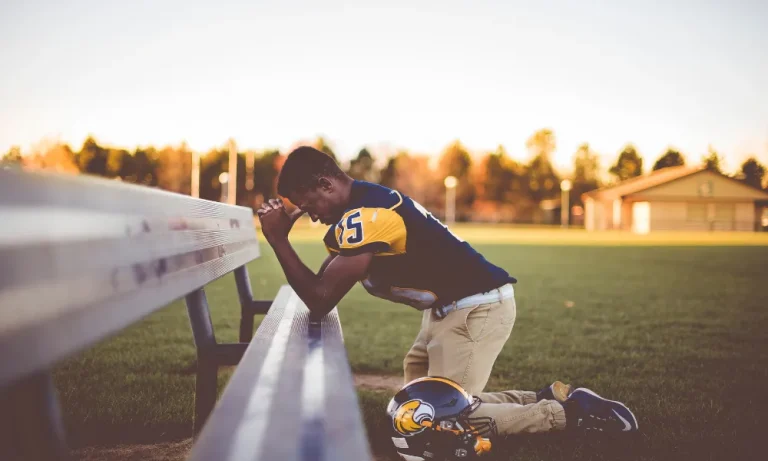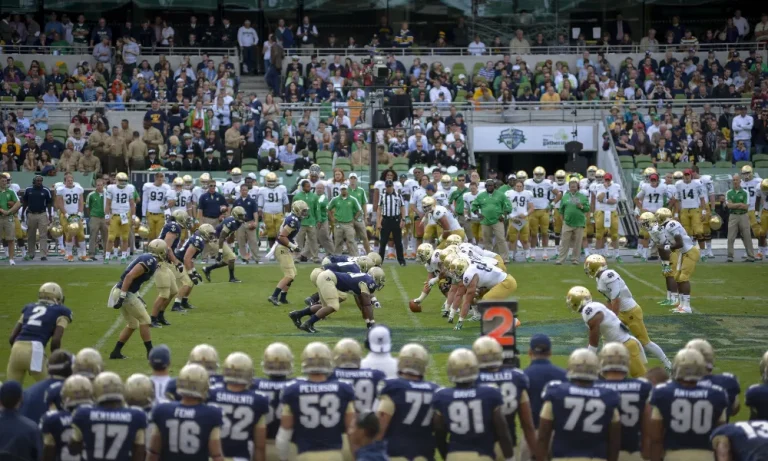What is Situational Football?
Situational football is like the secret sauce that separates the champions from the rest. It’s all about making the right moves at the right time, reading the field, and adapting your strategy to fit the circumstances.
Whether you’re on offense or defense, understanding situational football can be the game-changer you’ve been searching for. So, what exactly is situational football?
What is Situational Football?
Situational football is like the strategic playbook within the game itself. It’s the art of recognizing and capitalizing on specific game situations to gain an advantage over your opponents.
Unlike regular gameplay, where teams follow their standard strategies, situational football requires quick thinking, adaptability, and a deep understanding of the game’s nuances.
In situational football, the focus shifts from executing a set game plan to making the best decisions based on the circumstances at hand.
It’s about assessing the current situation, reading the field, and adjusting your tactics accordingly. This approach allows teams to maximize their chances of success by leveraging their strengths and exploiting the weaknesses of the opposing team.
To better grasp the concept, let’s explore some common situational football scenarios:
- Red Zone Offense/Defense: The red zone refers to the area between the opponent’s 20-yard line and the goal line. In this crucial zone, both the offense and defense need to adjust their strategies. The offense aims to score a touchdown, while the defense focuses on preventing one. Situational play-calling, unique formations, and specific plays are employed to optimize performance in this critical area.
- Two-Minute Drill: When time is running out in a half or the game, teams often initiate the two-minute drill. The objective here is to efficiently move the ball down the field and score before time expires. This high-pressure situation demands precise execution, quick decision-making, and effective clock management.
- Goal-Line Stands: Imagine the opposing team is just a few yards away from scoring a touchdown. A goal-line stand refers to the defensive strategy employed to prevent the offense from crossing the goal line. This intense situation requires a strong defensive front, disciplined coverage, and relentless pursuit of the ball carrier.
Key Situational Football Concepts
Mastering key situational football concepts is crucial for any team aiming for success on the field. Let’s explore some of these concepts and understand their significance in the game.
Red Zone Offense/Defense
The red zone is the area between the opponent’s 20-yard line and the goal line. It holds immense importance because it presents a prime scoring opportunity for the offense. On the other hand, the defense aims to prevent the offense from reaching the end zone.
To excel in red zone offense, teams need to capitalize on their strengths and exploit the weaknesses of the defense. Creative play-calling, utilizing reliable pass options, and effective running plays become essential.
Conversely, the defense must tighten their coverage, apply pressure on the quarterback, and maintain strong run defense to limit the offense’s scoring chances.
Two-Minute Drill
The two-minute drill occurs when there is limited time left in a half or the game, and a team needs to quickly move down the field to score. The purpose of this drill is to efficiently manage the clock and execute plays swiftly.
To succeed in the two-minute drill, teams must prioritize plays that gain chunks of yardage and conserve time.
Quick passes, sideline routes, and effective communication are vital. Additionally, understanding when to call timeouts and managing the clock strategically can make a significant difference in the outcome of the game.
Goal-Line Stands
Goal-line stands happen when the opposing team is just a few yards away from scoring a touchdown. In this crucial situation, the defense must prevent the offense from crossing the goal line.
To execute successful goal-line stands, the defense needs to maintain a strong defensive front, clog running lanes, and provide tight coverage on receivers. It requires discipline, physicality, and relentless pursuit of the ball carrier.
Effective communication and coordinated efforts among the defensive players become paramount to denying the offense a touchdown.
Third Down Conversions
Third-down conversions play a pivotal role in situational football. They determine whether the offense continues its drive or the defense gets a chance to take over.
Offensively, teams employ various tactics like well-designed pass plays, quick throws, or power running to convert the third-down situations. On the defensive side, strategies such as tight coverage, effective pass rush, and well-timed blitzes aim to force the offense into unsuccessful conversions.
Excelling in third-down conversions can significantly impact a team’s ability to sustain drives and control the game’s momentum.
Benefits of Understanding Situational Football
Understanding situational football can provide players and teams with numerous benefits, ranging from improved decision-making on the field to gaining a competitive edge over opponents.
Improved Decision-Making on the Field
One of the key benefits of understanding situational football is the ability to make better decisions during the game. By comprehending the specific circumstances and context of each situation, players can assess the risks and rewards more effectively.
For example, a quarterback who understands the game situation and the strengths and weaknesses of the opposing defense can make quicker and more accurate decisions on where to throw the ball. This leads to improved efficiency and minimizes turnovers, increasing the team’s chances of success.
Increased Chances of Success in Critical Moments
Critical moments often arise in football, where a single play can determine the outcome of the game. By understanding situational football, players can better prepare for these pivotal moments and increase their chances of success.
Whether it’s a goal-line stand on defense or a two-minute drill on offense, knowing how to adapt and execute in these situations can be the difference between victory and defeat. This knowledge allows teams to remain composed under pressure and capitalize on opportunities when they arise.
Competitive Edge over Opponents Who Neglect Situational Football
Teams that neglect situational football give their opponents a significant advantage. By understanding and utilizing situational strategies, a team can exploit their opponent’s weaknesses and create mismatches on the field.
For example, if a team identifies that their opponent struggles to defend against deep passes, they can strategically call more long-distance throws to exploit this vulnerability. This competitive edge puts teams in a favorable position and increases their chances of coming out on top.
FAQs: Situational Football
How does understanding situational football benefit players and teams?
Understanding situational football improves decision-making on the field, increases chances of success in critical moments, and provides a competitive edge over opponents who neglect situational strategies.
Can you provide an example of situational football in action?
Sure! In a two-minute drill, when a team is trailing by a few points and running out of time, they might focus on quick passes and sideline plays to conserve the clock and move closer to the end zone efficiently.
How do teams utilize situational football strategies?
Teams utilize situational football strategies by analyzing the specific circumstances of the game, identifying weaknesses in the opponent’s defense, and adjusting their play calling and execution accordingly to exploit those weaknesses.
Is situational football only important for specific positions, like quarterbacks?
No, situational football is important for all positions on the field. While quarterbacks play a crucial role in decision-making, every player needs to understand situational awareness to make the right choices and contribute effectively to the team’s success.
Conclusion
Understanding situational football is crucial for players and teams to maximize their performance on the field. By analyzing specific game situations, making informed decisions, and capitalizing on opportunities, teams can gain a competitive edge. Apply your knowledge of situational football and watch your game reach new heights!



